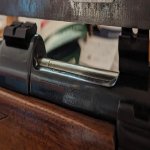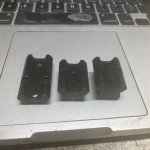Hi everyone. I think this is really the first time I've posted a question on this forum before but I'm hoping someone(s) can be of help.
I recently purchased a Herters/Interarms model J9 and I've got an issue with scope mounting.
It came with bases/scope already installed but could tell there was something wrong. I pulled it all apart and found the heights on the bases front to rear are way out. I've tried every combo of large ring Mauser bases 20a/55 (listed for Mark X) and 46/45(listed for other commercial 98 actions).
I understand that I could technically shim these but they are out A LOT and to be honest I don't want to shim them.
My question for everyone is if anyone has been through this and found a good solution or combination that works. I have seen the EGW listing for the one piece base. But I'm concerned it won't work. I also have to load this rifle from the top, something to keep in mind for one piece bases.
I recently purchased a Herters/Interarms model J9 and I've got an issue with scope mounting.
It came with bases/scope already installed but could tell there was something wrong. I pulled it all apart and found the heights on the bases front to rear are way out. I've tried every combo of large ring Mauser bases 20a/55 (listed for Mark X) and 46/45(listed for other commercial 98 actions).
I understand that I could technically shim these but they are out A LOT and to be honest I don't want to shim them.
My question for everyone is if anyone has been through this and found a good solution or combination that works. I have seen the EGW listing for the one piece base. But I'm concerned it won't work. I also have to load this rifle from the top, something to keep in mind for one piece bases.











































































